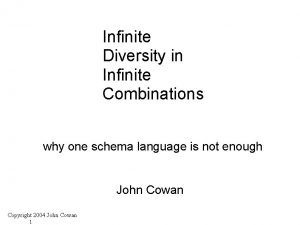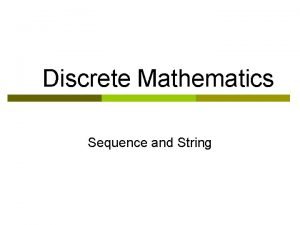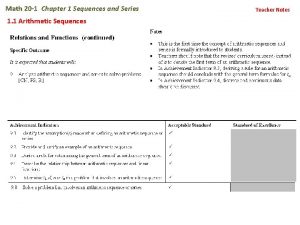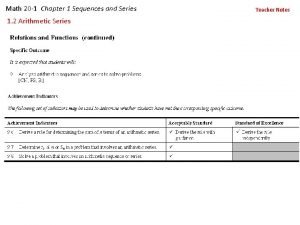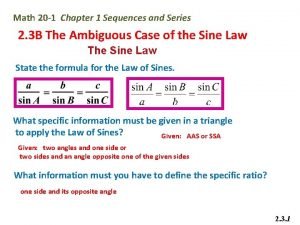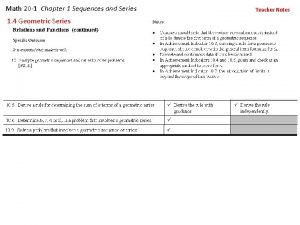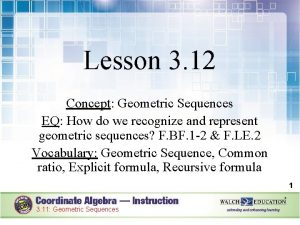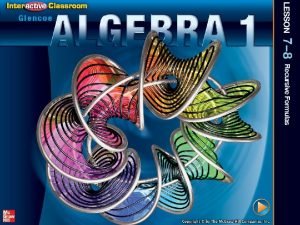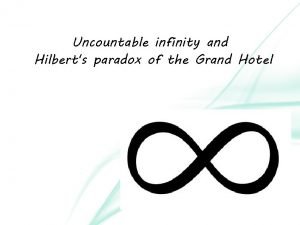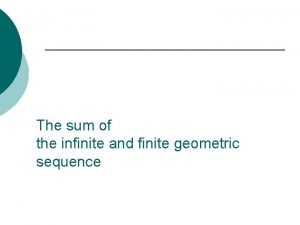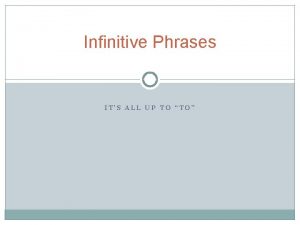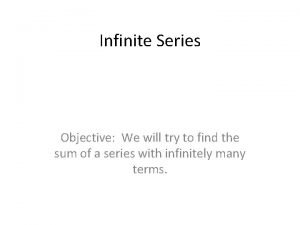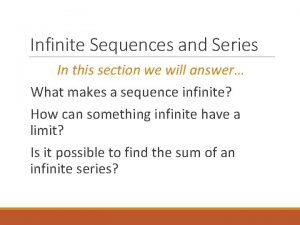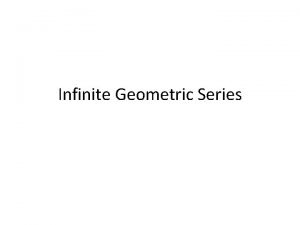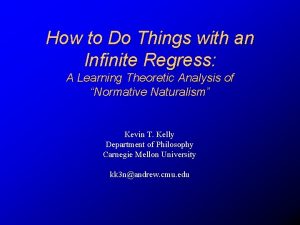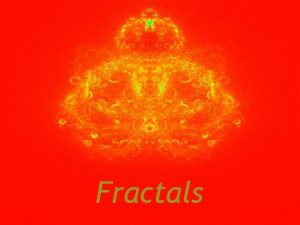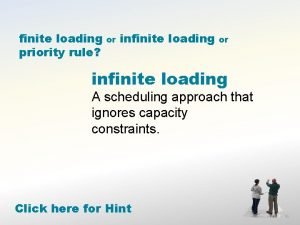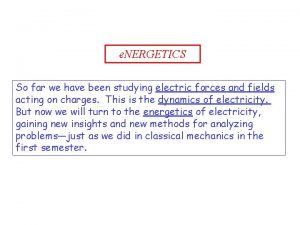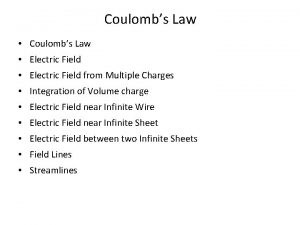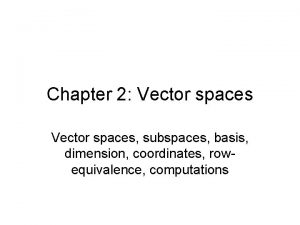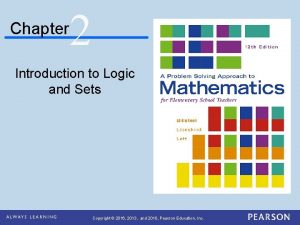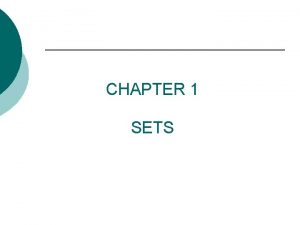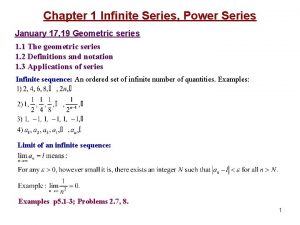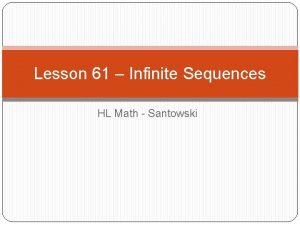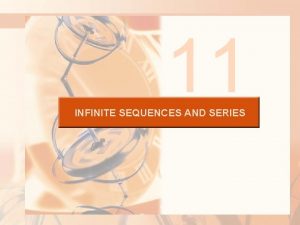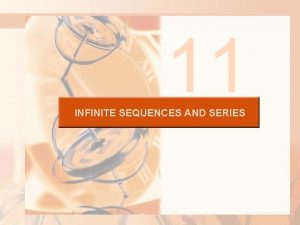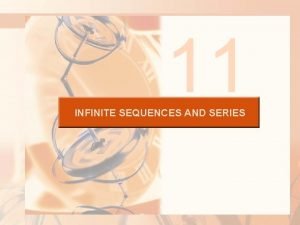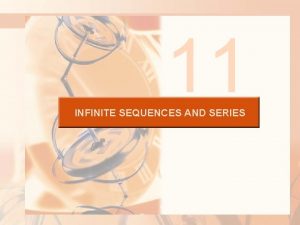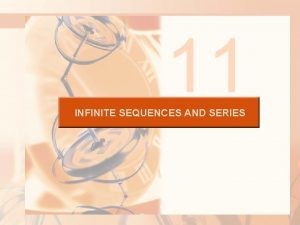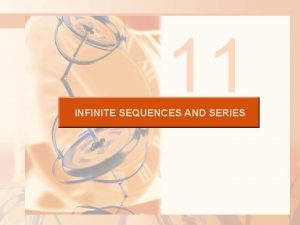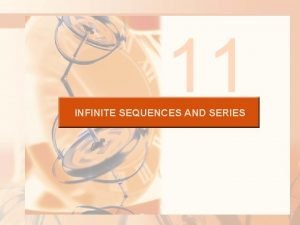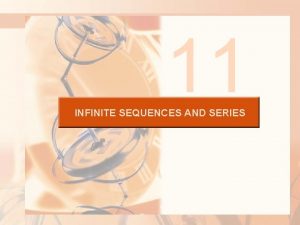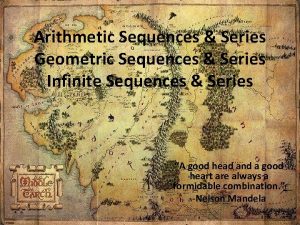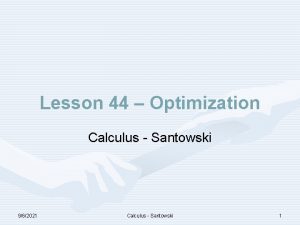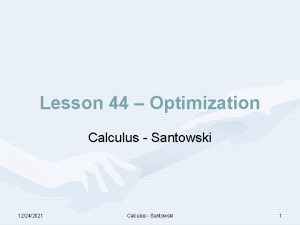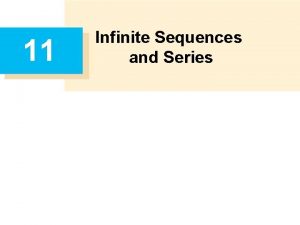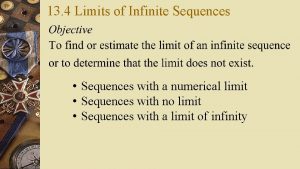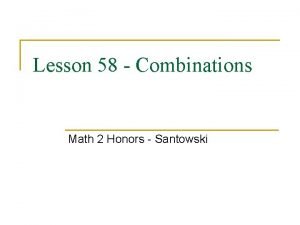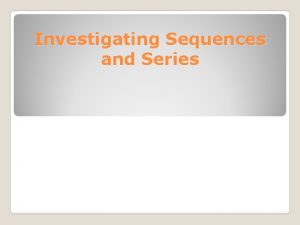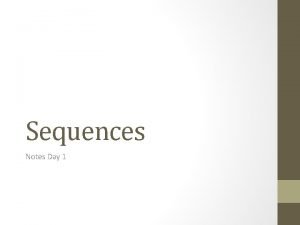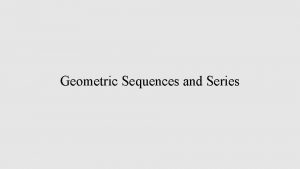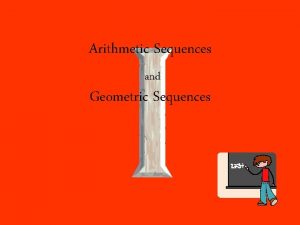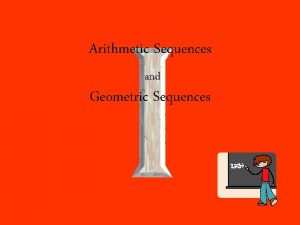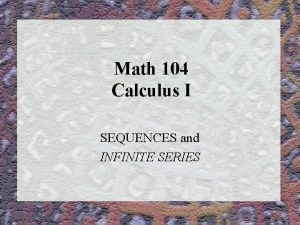Lesson 65 Infinite Sequences HL Math Santowski Lesson


































- Slides: 34

Lesson 65 – Infinite Sequences HL Math - Santowski

Lesson Objectives (1) Review basic concepts dealing with sequences (2) Evaluate the limits of infinite sequences (3) Understand basic concepts associated with limits of sequences (4) Introduce limits of functions & make the connection to infinite sequences

Setting the Stage Evaluate

Setting the Stage Evaluate Explain why we can’t evaluate this integral with the techniques discussed so far in this course

Explain the sequence in the following slides:

Explain the sequence in the following slides:

Explain the sequence in the following slides:

Explain the sequence in the following slides:

Explain the sequence in the following slides:

Explain the sequence in the following slides:

Explain the sequence in the following slides:

(A) Review of Sequences List the first four terms of each of the following sequences:

(A) Review of Sequences List the first four terms of each of the following sequences: Write an explicit expression for the general term of:

(B) Limits of a Sequence Investigate the behaviour of these sequences:

(B) Limit of a sequence Consider the sequence If we plot some values we get this graph

(B) Limit of a sequence Consider the sequence

(B) Limits of a Sequence We say that if we can make an as close to L as we want for all sufficiently large n. In other words, the value of the an’s approach L as n approaches infinity. We say that if we can make an as large as we want for all sufficiently large n. Again, in other words, the value of the an’s get larger and larger without bound as n approaches infinity. We say that if we can make an as large and negative as we want for all sufficiently large n. Again, in other words, the value of the an’s are negative and get larger and larger without bound

(B) Limit of a sequence (Defn 1) A sequence {an} has the limit L if we can make the terms of an as close as we like by taking n sufficiently large. We write

Limit of a sequence

(B) Limit of a sequence (Defn 2) A sequence {an} has the limit L if for every there is a corresponding integer N such that We write

y= L is a horizontal asymptote when sequence converges to L.

(B) Limits of a Sequence Example: Given the sequence (a) Find the minimum value of m such that (b) Consider the epsilon value of 0. 001 and 0. 00001. In each case, find the minimum value of m such that

Convergence/Divergence If exists we say that the sequence converges. Note that for the sequence to converge, the limit must be finite If the sequence does not converge we will say that it diverges Note that a sequence diverges if it approaches to infinity or if the sequence does not approach to anything

(B) Limits of a Sequence Which of the following sequences diverge or converge?

Examples

(C) More Limit Concepts If {an} and {bn} are convergent sequences and c is a constant, then

(C) More Limit Concepts

L’Hopital and sequences L’Hopital: Suppose that f(x) and g(x) are differentiable and that near a. Also suppose that we have an indeterminate form of type . Then

Squeeze Theorem for Sequences

(C) More Limit Concepts Use the Squeeze theorem to investigate the convergence or divergence of:

Definition of a Monotonic Sequence

Sequence

Bounded Monotonic Sequences

Video links patrick jmt https: //www. youtube. com/watch? v=Kxh 7 y. JC 9 Jr 0 https: //www. youtube. com/watch? v=9 K 1 xx 6 wf. N-U
 Infinite diversity in infinite combinations
Infinite diversity in infinite combinations Infinite series convergence
Infinite series convergence Notation for sequences
Notation for sequences Chapter 1 sequences and series
Chapter 1 sequences and series Math 20-1 sequences and series
Math 20-1 sequences and series Sequences and series math 20-1
Sequences and series math 20-1 Sequences and series math 20-1
Sequences and series math 20-1 Lesson 3: arithmetic and geometric sequences
Lesson 3: arithmetic and geometric sequences Lesson 2 recursive formulas for sequences
Lesson 2 recursive formulas for sequences Math game math hit the button
Math game math hit the button Wpcsd infinite campus
Wpcsd infinite campus Uncountable infinity symbol
Uncountable infinity symbol Finite geometric series
Finite geometric series Lths graduation requirements
Lths graduation requirements Reaching for the infinite heart
Reaching for the infinite heart Infinite set example
Infinite set example Difference between finite and infinite sequence
Difference between finite and infinite sequence Infinitive vs prepositional phrase
Infinitive vs prepositional phrase Sum of harmonic sequence formula
Sum of harmonic sequence formula Formula for infinite geometric series
Formula for infinite geometric series How to find the sum of an infinite series
How to find the sum of an infinite series Historicisml
Historicisml Gim model social work
Gim model social work Koch snowflake perimeter formula
Koch snowflake perimeter formula Finite loading
Finite loading Electric field of infinite line
Electric field of infinite line Electric field of infinite line
Electric field of infinite line Dimension of vector space
Dimension of vector space Equivalent set example
Equivalent set example Set what is
Set what is Partial sum of an infinite series
Partial sum of an infinite series Ramanujan infinite series
Ramanujan infinite series Berea infinite campus
Berea infinite campus Arithmetic sequence pictures
Arithmetic sequence pictures Arithmetic sequence formula
Arithmetic sequence formula
